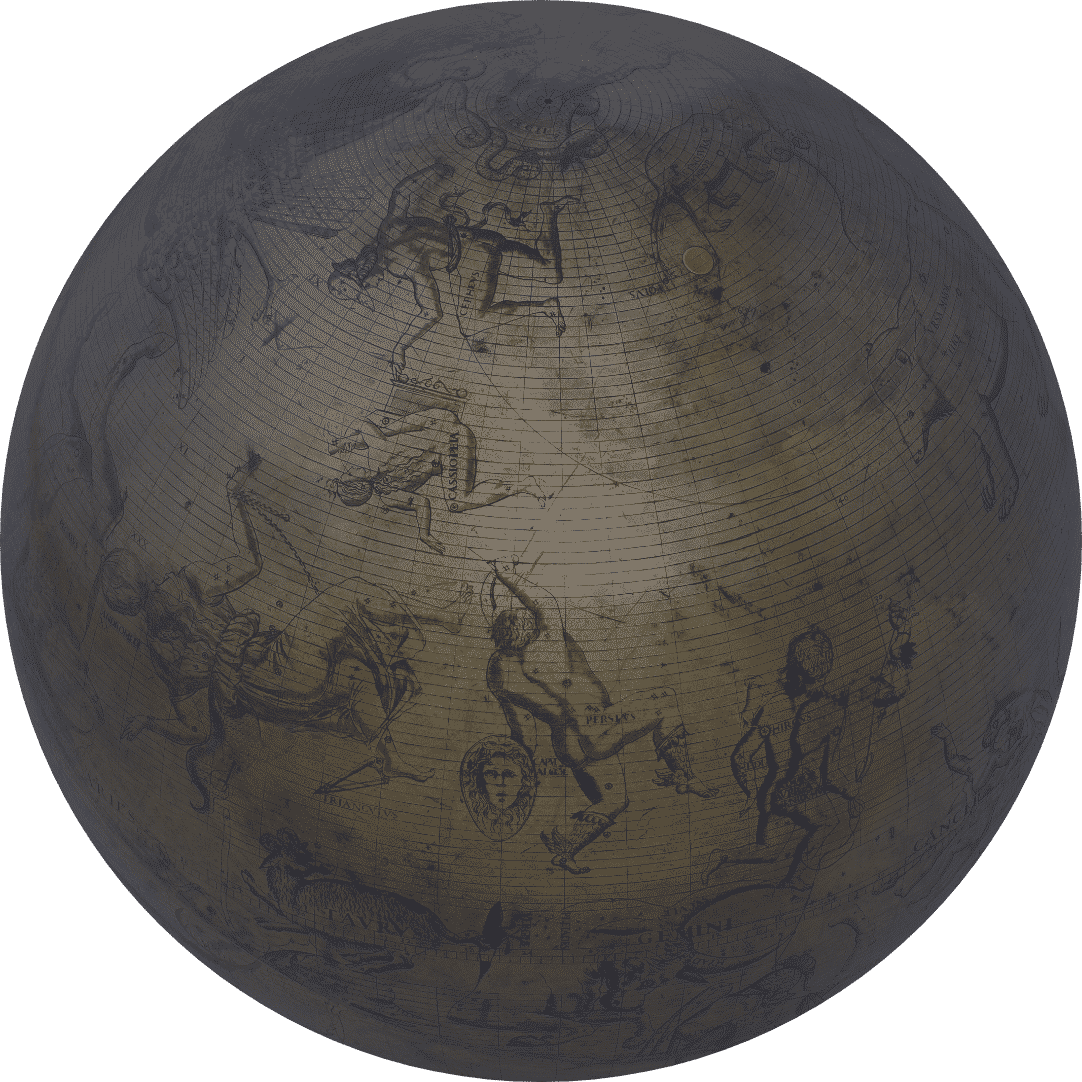
Timeline
Antiquity
Circa 570 B.C.E.
Anaximander (in Miletus) theorizes that the immobile, cylindrical Earth is poised at the center of the Universe.
Circa 530 B.C.E
Pythagoras founds his school in Italy.
Circa 490 B.C.E.
Parmenides’s poem about the sphericity of the Earth, the Sun, and the Moon.
Circa 387 B.C.E.
Plato founds his Academy in Athens.
Eudoxus of Cnidus builds the first model of the world with concentric spheres surrounding the Earth, as well as the first celestial globe portraying the constellations.
Circa 350 B.C.E.
Aristotle writes De Caelo (“On the Heavens”), which presents his astronomical theories.
Circa 323 B.C.E.
Death of Alexander the Great. Ptolemy I founds the Museum and the Library in Alexandria.
Circa 276-278 B.C.E.
Aratus of Soli writes an educational poem, the Phenomena, now the oldest extant Greek text describing the constellations. Translated into Latin with extensive commentary, it remains a reference in the west until the twelfth century.
Circa 280 B.C.E.
Euclid writes hisPhenomenaabout applying sphere geometry to astronomy.
Circa 270 B.C.E.
Aristarchus of Samos hypothesizes a system in which all the planets revolve around the sun.
Circa 240 B.C.E.
In Sicily, Archimedes makes discoveries in mathematics and physics; he writes a treatise on building armillary spheres, called On Sphere-Making.
Circa 230 B.C.E.
Eratosthenes measures the circumference of the Earth.
Circa 170 B.C.E.
Crates of Mallus builds the first terrestrial globe; it shows the Earth divided into four “islands” separated by a double ring of ocean waters.
Circa 140 B.C.E.
In Alexandria, Greek scholar Claudius Ptolemy composes the Almageste and the Geography, masterful summaries of Greco-Roman knowledge, as well as the Tetrabible, an astrology treatise Transmitted successively to the Byzantines, the Arabs, and the Latin west, Ptolemy’s body of work remains scholars’ principal reference for over 1,500 years. In what will later come to be known as the Ptolemaic system, the spherical Earth is immobile at the center of the world, and the stars, both fixed and wandering revolve around it.
Middle ages
830
In Baghdad, Al-Khawarizmi publishes Zīj al-Sindhind, the first astronomical tables from the Islamic world.
964
Persian astronomer Abd al-Rahman al-Sufi writes the Book of Fixed Stars.
Circa 1150
Translation of the Almageste from Arabic into Latin by Gerard of Cremona, in Toledo.
Circa 1259
Persian astronomer Naṣīr al‐Dīn al‐Ṭūsī has an observatory built in Maragheh; he begins a program of observation of the planets and publishes his Ilkhanic Tables.
1409
First Latin translation of Ptolemy’s Geography; copied and expanded with maps it spreads across Europe, triggering a renaissance in European cartography.
1492
Martin Behaim builds a terrestrial globe – now the oldest extant western sphere – portraying geographical knowledge after Portuguese explorers’ voyages along the coast of Africa, and just before Christopher Columbus’s discoveries.
Modern era
1492-1504
Christopher Columbus, Pedro Cabral, and Amerigo Vespucci’s voyages of discovery of the Americas.
1498
Vasco de Gama reaches India by sailing down the western coast of Africa and around the Cape of Good Hope.
1507-1509
Martin Waldseemüller christens the New World “America” and publishes the first globe made from gore segments.
1519-1522
Circumnavigation of the globe achieved by Magellan and Elcano.
1541
Mercator builds the first terrestrial globe including loxodromes (rhumb lines), which are extremely useful for navigation.
1543
Copernicus publishes De Revolutionibus, which includes his theory of the Universe: the Earth and the other planets revolve around the sun.
1572-1577
The Danish astronomer Tycho Brahe’s observations (supernova of 1572, great comet of 1577) challenge the Aristotelian principle of the immutability of the supralunary heavens.
1589-1598
Dutch astronomer Petrus Plancius adds 14 southern constellations to the celestial globe, as well as the dwarf galaxies of the Magellanic Clouds.
1609-1618
In a break with Ptolemy’s system of epicycles, Johannes Kepler’s three laws define new mathematical principles that rule the planets’ orbits, which are redefined as ellipses.
1610
Galileo supports Copernicus’s theory in The Starry Messenger, and discovers Jupiter’s satellites with a telescope of his own making.
1644
Descartes publishes his Philosophical Principles, in which he presents his vortex theory of cosmology.
1669
Astronomer Jean Picard accurately measures the length of a meridian arc between Paris and Amiens, and uses that to calculate the Earth’s radius.
1687
Newton discovers the law of universal gravitation.
1726
Astronomer James Bradley discovers stellar aberration, or the aberration of light: physical proof that the Earth turns around the Sun.
1737
First Maupertuis, then La Condamine and Bouger, measure the flattening of the Earth at the Poles, confirming Newton’s calculations.
1750
Astronomer Thomas Wright publishes his Original Theory or New Hypothesis of the Universe, in which he presents a circular organization of the Universe and proposes two models for the Milky Way.
1758
The return of Halley’s Comet confirms the existence of “periodic” comets that pass through several star systems. Alexis Clairaut’s precise calculations of its trajectory and perihelion reconfirm Newton’s Laws.
1783
Herschel makes systematic observations of the sky in order to determine the shape of our galaxy.
Contemporary era
1879
Astronomer George Howard Darwin publishes his theory of terrestrial tides: the Earth’s shapes changes at an average rate of 30 cm. (12 inches) every 12 hours.
1929
Along with Milton Humasson, astronomer Edwin Hubble establishes that the Universe is expanding.
1957
The launch of the Sputnik I satellite announces a new era in understanding what is called “the figure of the Earth.”
1970
First steps in spatial altimetry, revealing bumps and hollows on the ocean surface.
2009
The GOCE satellite confirms the existence of bumps and hollows of over 100 meters on the globe’s mantle.